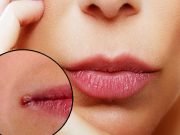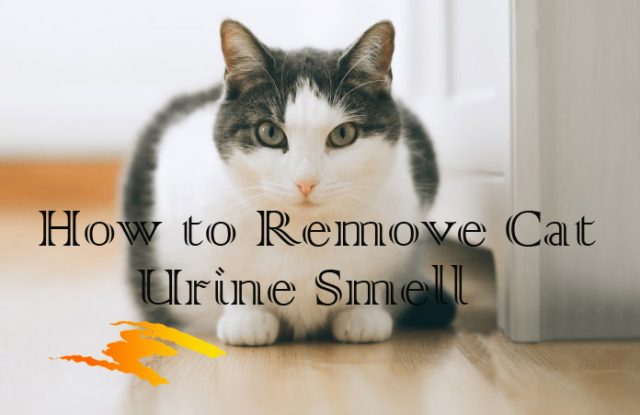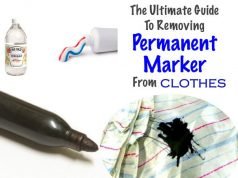Cats are cute. As much as you adore your kitty, the odor of its urine is quite challenging to live with. Whether it is accidental peeing in carpet, or on the furniture, or flooring, etc., it becomes almost impossible to get rid of the ammonia smell. The issue gets bigger if the urine is left unclean because it would signal the cat to pee on the same spot again. This calls for certain foolproof remedies to get rid of the urine odor the next time your cat decides to pee outside the litter box. Pet urine odors can be removed fast by either adopting home remedies or using the synthetic products available in the vet store. Following are eleven of the best home remedies to tackle with the cat pee smell.
1. The four ingredient formula: You will need
a. 5 oz Baking soda
b. 1 teaspoon White vinegar
c. 1 teaspoon Hydrogen Peroxide
d. Half a teaspoon of Orange essential oil
And a spray bottle. Mix all of these ingredients in a bowl and put them in a spray bottle. The quantity of this depends on where you’re using it and the size of the space you’re using it on. You can half, double or triple the quantity if need be.
Gently shake the spray bottle and spray the solution on the affected area and let it completely dry.
The texture of the formula will turn into a powder and that’s when you know that the solution has completely dried. After it dries up, use a vacuum cleaner and clean out the powder. If the cat pee odor still remains, then repeat the process again until the pee odor is completely gone.
Safety measure: Do not store the leftover formula. Dispose it immediately after use. The ingredients in the mixture can strongly react with the ammonia present in the cat’s urine and produce harmful gases that might be harmful to people around and even cats.
The final step:
To completely clean out the area, mix 1 cup of baking soda with six drops of an essential oil of lemon or any other citrus fruit. Sprinkle the mixture on the dry affected area and leave it overnight. Vacuum the area in the morning and the odor will be gone for good.
Note: Dispose the solution after use because the ingredients in the mixture might react and become toxic if left for a long time. Before using up the entire quantity, it is always a good idea to test the solution on a sample of the area you’re using it on. This will ensure that the formula doesn’t damage the floor or anything you’re using it on.
2. Homemade pet odor remover: This is a great technique to remove cat stains from the carpet. Blot up as much cat urine as you can with paper towels. Make a solution out of three portions of water with one portion of vinegar. Pour this over the spot. Dry the area out completely with paper towels. After completely drying it, sprinkle some baking soda on the area.
Now make a solution of three fourth cup of three percent hydrogen peroxide solution with a teaspoon of detergent and spray it over the baking soda area. Try the solution on a small portion of carpet to check if it discolors the carpet. If it doesn’t, your next step would be to run in the baking soda into the carpet using your fingers or a brush. Let this dry and vacuum clean the area. If the lather still remains, rinse the carpet until the odor is completely gone.
3. Bleaching (walls and cement flooring): If you’re using this method then you’ve got to be a bit careful because the ammonia (in the cat urine) might react with the bleach and become toxic. Firstly, wash the area with a cleaner that is ammonia free and wipe it clean with fresh water to remove the cleaner residue. Repeat this step until the area is completely clean and free of the cleaner residue.
Now, mix ten portions of water to one portion of bleach solution and put it in a spray bottle. Keep yourself well protected from the bleach by using gloves and keeping the area ventilated. Spray this mixture on the walls and the flooring and let it sit for thirty seconds or so. Wipe it off with a clean damp cloth.
4. How to eliminate urine odor from cushions and carpets: This process is quite similar to cleaning the carpets. Simply soak the urinated area with water. Using paper towels, blot up the cat urine as much as you can. Now pour in some enzyme cleaner on the affected area. Let the mixture sit for fifteen minutes and squeeze out excess enzyme from the cushion. Leave it outside in the sun to let it properly dry. Cushions take really long to dry. To avoid the stink from the partially wet area, put an aluminum foil before you put the cushion back onto the furniture. Use a second layer of foil on top of the cushion so your cat doesn’t pee on the same area again.
In case of mattresses, spray the cleaner on the area, let it sit and blot it up. Use multiple fresh towels to layer them up on the mattress before you put a bedspread. Keep changing the towels every day until the mattress dries out completely. To prevent the cat from peeing back on the same spot again, cover it with a plastic wrap when the mattress is not in use. As a preventive measure, you can put a plastic sheet to cover the mattress always if the cat has a tendency to pee outside the litter box.
5. Reduce the chances of your cat peeing at inappropriate areas: When your cat pees outside her litter box, instead of yelling at her or punishing her, immediately place her into the litter box. Keep doing this every time she pees outside her litter box and pat her on the back when she pees in the litter box. This will give her a positive connection with urinating in the box. Again, your cat might be peeing outside her box because of stress or a medical condition.
6. Regularly keep replacing her litter box: Just like how humans prefer tidy washrooms, cats like their litter boxes completely clean. If the box is left unclean, the cat would want to pee elsewhere like on cushions, mattresses, sofa, etc. Make sure that you keep the litter box in a silent space away from her area of feeding. This will ensure that she uses the litter box regularly.
7. Stop the pee urine smell on clothing and lines: Before machine washing your clothes, rinse the pee area with cold water. Along with detergent, add one fourth cup of apple cider vinegar. If the smell still remains, add in some enzyme cleaner to the clothes and wash it again. Avoid using bleach in washing machines because the reaction of bleach with the ammonia in the cat pee can be toxic if inhaled. Instead of drying the clothes out in the machine, dry them out in the open air because the machine might retain the pee odor. This process requires at least three to four iterations.
8. Fix an appointment with the veterinarian: Although it is sometimes okay for your cat to pee at the wrong places, but if it continues for a long time, your cat might have a medical problem. Take your cat to the vet and discuss the possible issues that might be causing your cat to not pee in the litter box. Some of the possible medical issues include diabetes, kidney diseases or urinary tract infections. If the medical issue is left unattended, it can cost your pet’s life.
Cats sometimes also pee at unusual places if they stress out. This may be due to the surrounding dogs and cats that might cause trouble to the cat. In such cases, block away the view from your cat and place the litter box away from that place. You can place the box at a much calmer spot where she isn’t disturbed by anyone. Also, do ensure that the box is regularly changed and cleaned.
9. Wet vacuum cleaners: These are called extracting vacuum cleaners. They saturate the area with fresh water and then suck the urinated water back in. This goes into the tank and is one of the best ways to clean up, especially the carpets. Make sure that you read the instructions carefully and use clean and fresh water. Do not use steamers because the heat from the steamer will strongly seal in the odor into the carpet fibers.
After this, use some sodium bicarbonate on the area and let it completely absorb the odor. This may take an hour or so. Finally, use a vacuum cleaner to clean it up. Otherwise, you can use this in house, natural homemade freshener for carpet. Here is the recipe.
To a cup of dried and crushed herbs, add a teaspoon of cinnamon, sodium bicarbonate and ground cloves. Use this mixture on the urinated area of the carpet and let it remain for ten to twenty minutes. Finally clean this up with a vacuum cleaner. You can store this in a container for future use as it lasts for a couple of days.
10. Homemade removers: Stop the pee urine smell with these effective homemade odor removers.
Vinegar solution: Mix two portions of warm water and a portion of white vinegar and put them in a spray bottle and shake the mixture well. You can use this mixture whichever way you like. Either spray it on the affected area and wipe with a clean paper towel or mix in the solution into a bucket of clean water and dip a cloth into the solution. Now using this wet cloth, rub away the stain. Let the spot dry and then use a clean dry cloth to wipe the stain and the solution using warm water.
Paper and charcoal: Wrap a couple of charcoal pieces into a newspaper and place them in the affected areas of the house and keep the house well ventilated. Let them be for a few hours and you will see that the odor has disappeared.
11. Synthetic removers: Below are a couple of removers that are easily available in the nearby vet stores.
a) Nature’s Miracle Just for Cats Urine Destroyer Intense Urine Stain & Odor Remover: Super effective in removing recurring smells and strong stains. This remover can be even bought online.
b) UV rays to detect the urinated areas: Ultra violet light is very effective in spotting the urinated areas. Termed as black light, this scientific method is of great help when you cannot figure out where the smell is emanating from.
c) Black fluorescent lights are highly effective in spotting the urine stains. These can be easily found in any pet stores or on online websites.
Precautions:
- Clean the litter box regularly
- Get her anxiety treated if it’s caused by her habit of peeing outside the box.
- Keep changing the litter box often. Cats hate dirty litter boxes.
- Using disposable pet training pads in areas she often continues to pee.
- Get your cat neutered.
- Taking your cat to the vet for regular checkups.
- If cats pee on potted plants, place a couple of orange peels on the soil. Cats hate the odor of oranges. Or, visit a nearby pet store and buy a cat spray. Instead of the orange peel, you can use this spray on the plants.
- Cats that are entire are more likely to pee at inappropriate places than the desex cats. Consider getting your cat desexed.
- Avoid using small litter trays. Large cats will find it uncomfortable and end up peeing on sofas, mattresses and other inappropriate places.
- Sometimes, cats stress out because of external events or fear. If you think that the cat is peeing out of the fear of other dogs or cats, then keep the litter box at a safer place and avoid letting your cat go to such areas.
Related helpful resources

































